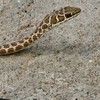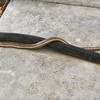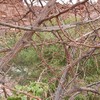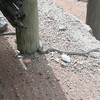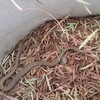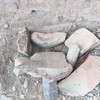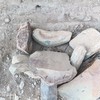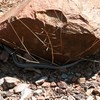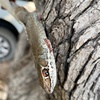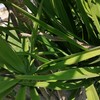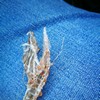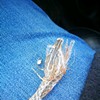Summary details for Psammophis leopardinus
If you are unsure of the identification of a snake you have observed, you can ask an expert for snake identification by uploading a photo to the Snakes of Namibia facebook page.
You can also get help from their amazing album of infographics of the common snake species in Namibia.
The facebook page also has contact details for snake catchers - people who are experienced in catching and removing snakes - throughout the country.
In the case of a snake bite, email "snakebite" to snakebitedoc@gmail.com. Namibia's snakebite expert - Dr Buys - will respond immediately.
Leopard Sand Snake
Psammophis leopardinus
Leopard Sand Snakes are extremely variable in colour ranging from uniform gray with no markings to grey/brown with lighter edged scales extending the length of the body. A narrow light brown line runs along the spine.
Size: 0.8 m - 1.2 m.
Distribution: North western - Central Namibia (endemic to Namibia). They are extremely common in the arid savannas and desert environments of north western and central Namibia.
Diet: Rodents, birds and lizards. Leopard sand snakes are mainly active during the day when they forage for food.
Reproduction: oviparous (egg laying).
Danger to man: Like all sand/grass/whip snake species they are not considered to be dangerous. They are considered to be mildly venomous, however the venom has no effect of humans or pets.
» See all records of Leopard Sand Snake Psammophis leopardinus





